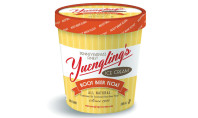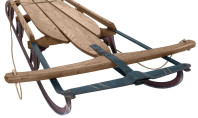A Baker’s Dozen of Winter Home Projects
By Andy Cook
Welcome to winter! With lower temperatures outside, this is the time of year where, with the exception of dealing with Mother Nature’s gift of snow, home projects are focused inward. Having this opportunity to address these types of planned (or maybe delayed) projects has the added benefit of your focused energy and effort, since you’re not worrying about cutting the grass or other warmer-temperature tasks. Here’s some expert advice for easy winter home projects. Plus, many of these projects are very low cost, or in some cases free!
1. Build better fires
According to the pros at PopularMechanics.com, “to boost efficiency in the fireplace, begin by replacing the leak-prone mid-chimney ‘throat’ damper with a ‘top-sealing’ or ‘chimney cap’ damper. This opens, shuts and seals like a storm door for the chimney.” They also suggest adding something called a fireback – an iron plate that protects the firebox brick and radiates heat into the room. The website also explained that “a heat exchanger warms the air and fans blow it (smoke-free) back into the room, increasing the fireplace’s efficiency from 5 to 65 percent.” Good advice, if you have a wood-burning fireplace. If you have a wood-burning fireplace – and aren’t comfortable with using is, consider converting to gas with a log set. This will enabled you to have a fire which you can turn on or off with a simple turn of a knob.
2. Upgrade the thermostat
Did you know that nearly half of the average home’s annual energy bill goes toward heating and cooling? According to the experts on DIYNetwork.com, a programmable thermostat can save as much as 30% on these costs, depending on how well your home is insulated, and the efficiency of your heating system. There are many types out there, but look for one with at least the option of a “five-plus-two-day” one which will enable you to have a different program for weekends. In the wintertime, program your thermostat so it’s cooler when no one is home, as well as when you are sleeping at night. They are relatively easy to install, and this website has videos to show you how to do it. Why heat an empty home during the day?
3. Turn down the water heater, or go tankless
Lower the temperature to 120 degrees F, and for every 10-degree drop, you recoup 3 to 5 percent of the power bill. When it’s time to replace the water heater, consider a tankless version, which only heats water when it’s needed. The upfront cost is higher, but long-term savings are significant. I converted to a tankless system in my home two years ago and it’s been great, as I only heat water when I need it. Also, since it’s an “on-demand” system, I don’t run out of hot water, which is great when I need to do laundry, run the dishwasher, and have family visiting who are taking long showers – all at the same time!
4. Unplug appliances
You may have heard this one before: turn off power strips or unplug appliances completely, as well as the chargers you have for your cellphone, tablet, laptop and game console. Idle machines are comically referred to as ‘vampires’ because they can “suck up” as much as 11% of your home’s electricity.
5. Paint a room
What better time than during the winter than to give a room (or two) a sprucing up? All the normal preparation rules apply, and don’t forget to remove switch plates and outlet covers. There are low-VOC and no-VOC (volatile organic compound) paints that reduce or eliminate harmful gasses and odors, as you may not have the luxury of opening the windows when painting. Also, cooler temperatures may help accelerate the drying time.
6. Clean your dryer
You may have seen those ads on television for those anteater-looking devices you attach to your vacuum cleaner, but the idea is a good one: removing lint from the dryer hose increases efficiency. Also be sure there are no kinks in the hose, or anything blocking where the hose terminates on the outside of your home.
7. Optimize heating and cooling
This tip is simple – don’t block the vents or radiators, depending on how you heat your home. Also, use Mother Nature to your benefit: open the curtains to let the sun help heat your home, and close them at night to keep the heat in.
8. Add a closet organizer
A single hanging bar closet woefully underuses the vertical space in your closet. Big box home centers have easy to install systems, which can double the hanging space and give you added shelving, enabling you to use your closets efficiently. You can even design a system online, or have a professional install one for you.
9. Give your tools a tune-up
When was the last time you cleaned, organized and inspected your tools? Taking time to do this will avoid future frustration when you realize you don’t have that 5/8” socket after all, or that your Philips-head screwdriver broke when you used it as a can opener.
10. Organize that basement or hall closet
Take everything out and assess what you have, and what you really need. Also it’s a great time to get a jump on your spring cleaning!
11. Change your filters
The experts tell us that pleated electrostatic filters catch up to 60 percent of allergens, whereas the blue fiberglass ones only catch lint and dust. Change them every two to three months or as soon as they show discoloration. Or if there are people or pets in your household with allergies or asthma, change your heating or cooling filters monthly. If you do it on the first of the month, it will become an automatic habit.
12. Fix a drip
You know, that leaking faucet in the bathroom is more than an irritating sound; think of it as the sound of your hard-earned money going down the drain. Either fix it yourself (again, use online videos – they are great) or have it fixed to reduce your water bill. Place a bowl or bucket under the drip and you’ll get a real sense of how much water you’re wasting.
13. Fix a leaky toilet
Here’s a trick I learned years ago from a friend’s father: if you put food coloring in the tank and it ends up in the bowl, there’s a leak. Replacing the flapper can save thousands of gallons of water a year. These flappers can be sneaky – you don’t always hear that faint sound of water (when the ball float doesn’t rise completely shutting off the fill valve).














